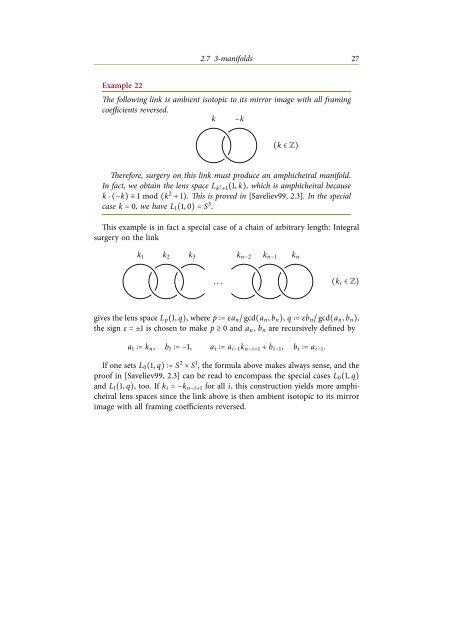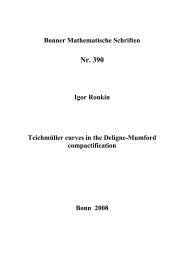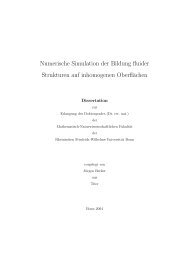Orientation reversal of manifolds - Universität Bonn
Orientation reversal of manifolds - Universität Bonn
Orientation reversal of manifolds - Universität Bonn
You also want an ePaper? Increase the reach of your titles
YUMPU automatically turns print PDFs into web optimized ePapers that Google loves.
2.7 3-<strong>manifolds</strong> 27<br />
Example 22<br />
The following link is ambient isotopic to its mirror image with all framing<br />
coefficients reversed.<br />
k −k<br />
(k ∈ Z)<br />
Therefore, surgery on this link must produce an amphicheiral manifold.<br />
In fact, we obtain the lens space L k 2 +1(1, k), which is amphicheiral because<br />
k ⋅ (−k) ≡ 1 mod (k 2 + 1). This is proved in [Saveliev99, 2.3]. In the special<br />
case k = 0, we have L 1 (1, 0) = S 3 .<br />
This example is in fact a special case <strong>of</strong> a chain <strong>of</strong> arbitrary length: Integral<br />
surgery on the link<br />
k 1 k 2 k 3 k n−2 k n−1 k n<br />
. . .<br />
(k i ∈ Z)<br />
gives the lens space L p (1, q), where p ∶= εa n / gcd(a n , b n ), q ∶= εb n / gcd(a n , b n ),<br />
the sign ε = ±1 is chosen to make p ≥ 0 and a n , b n are recursively defined by<br />
a 1 ∶= k n , b 1 ∶= −1, a i ∶= a i−1 k n−i+1 + b i−1 , b i ∶= a i−1 .<br />
If one sets L 0 (1, q) ∶= S 2 × S 1 , the formula above makes always sense, and the<br />
pro<strong>of</strong> in [Saveliev99, 2.3] can be read to encompass the special cases L 0 (1, q)<br />
and L 1 (1, q), too. If k i = −k n−i+1 for all i, this construction yields more amphicheiral<br />
lens spaces since the link above is then ambient isotopic to its mirror<br />
image with all framing coefficients reversed.





